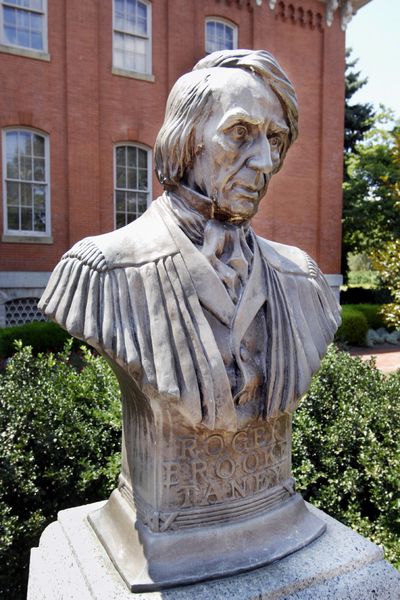Dred Scott ruling author’s bust comes under fire

An alderwoman in Frederick, Maryland, is renewing her decade-old quest to remove from City Hall a sculpture of the U.S. Supreme Court chief justice who wrote the 1857 Dred Scott decision affirming slavery.
Some supporters of Donna Kuzemchak’s proposal equate the bust of Roger Brooke Taney with the Confederate battle flag.
“I’m not trying to rewrite history,” Kuzemchak, a Democrat, said as she introduced the resolution Thursday night. “I consider this an attempt to correct misinterpreted history.”
The proposal will get a public hearing before the Board of Aldermen vote on it.
Taney’s stern image has stood for 84 years outside the red brick building that is municipal headquarters for the city of 67,000 about 50 miles west of Baltimore. When the city took over the former Frederick County courthouse in 1986, the bust was already there, honoring the Maryland native who practiced law in Frederick before becoming U.S. attorney general, then U.S. treasury secretary and finally chief justice of the Supreme Court.
Taney’s public service is also memorialized in public sculptures at the Maryland State House and the U.S. Supreme Court Chamber.
The fifth Supreme Court chief justice is best known for having written the 7-2 majority decision holding that Congress had no authority to prohibit slavery in new territories. Taney based the ruling on his assertion that when the Constitution was framed, blacks were “regarded as beings of an inferior order” with “no rights which the white man was bound to respect.”
Opponents of slavery denounced the decision, and it became a catalyst for the Civil War, which began four years later.
Kuzemchak’s last attempt to remove the sculpture ended with a compromise in 2009, when the city added a plaque explaining the Dred Scott decision.
Kuzemchak proposed moving the sculpture to a museum, such as Taney’s former home, now owned by the Historical Society of Frederick County.